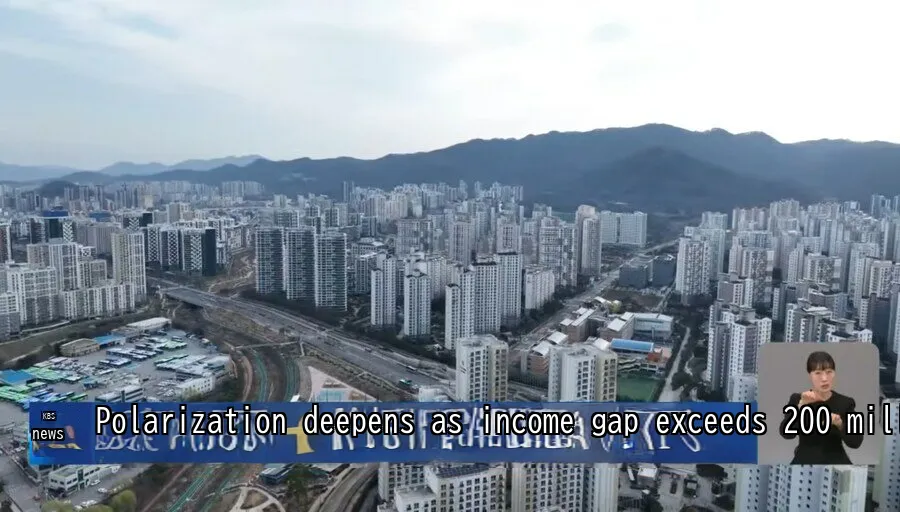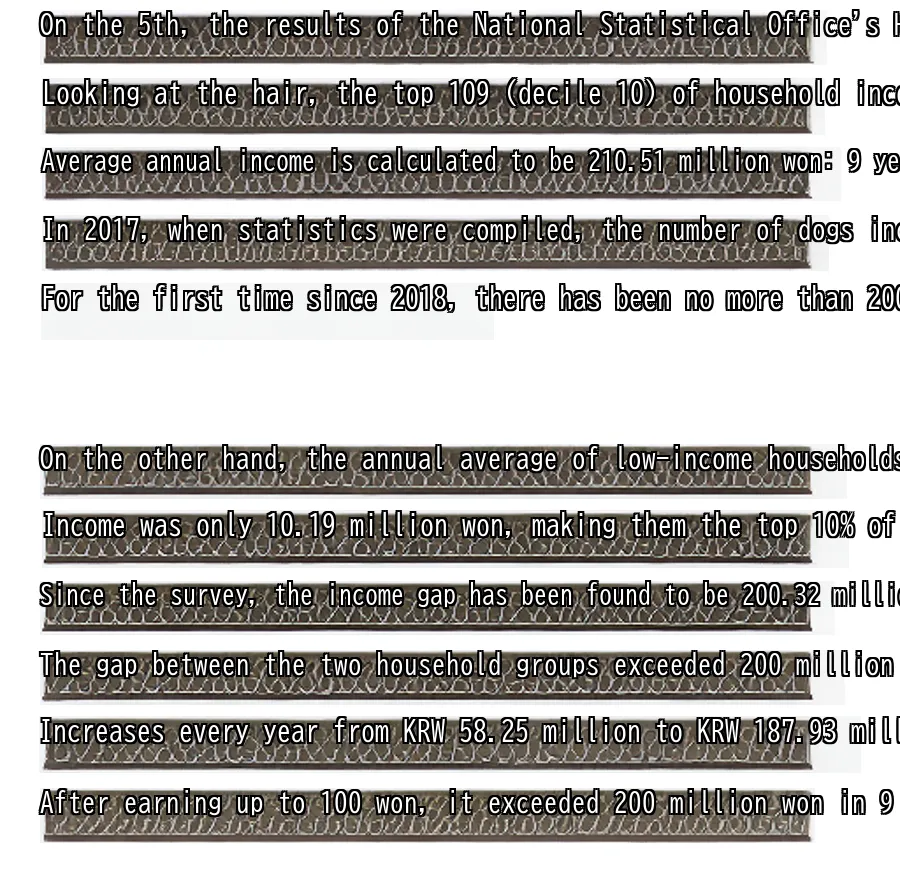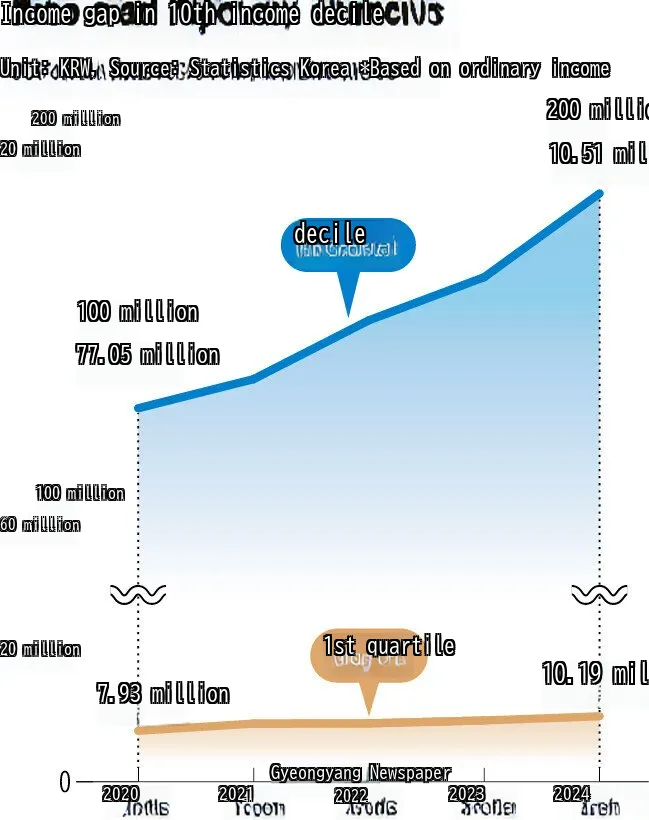
image text translation
KBS
news
Polarization deepens as income gap exceeds 200 million won
On the 5th, the results of the National Statistical Office’s Household Welfare Survey and the National Statistical Information Service
image text translation
Looking at the hair, the top 109 (decile 10) of household income in 2023
Average annual income is calculated to be 210.51 million won: 9 years of criminal history
In 2017, when statistics were compiled, the number of dogs increased by 13.04 million won (6.69).
For the first time since 2018, there has been no more than 200 million won:
On the other hand, the annual average of low-income households in the bottom 10% (1st decile) of income
Income was only 10.19 million won, making them the top 10% of households in the bottom income bracket.
Since the survey, the income gap has been found to be 200.32 million won.
The gap between the two household groups exceeded 200 million won for the first time in 2017.
Increases every year from KRW 58.25 million to KRW 187.93 million in 2022
After earning up to 100 won, it exceeded 200 million won in 9 years:
Income gap in 10th income decile
image text translation
Unit: KRW, Source: Statistics Korea *Based on ordinary income
200 million
200 million
20 million
10.51 million
decile
100 million
77.05 million
100 million
60 million
20 million
1st quartile
7.93 million
10.19 million
Gyeongyang Newspaper
2020
2021
2022
2023
2024
Top 10% household income: 210.51 million
Bottom 10% household income: 10.19 million
Earned close to 50 million won in 4 years
What capitalism needs to be most vigilant about is income polarization, which is starting to become extreme like in China.
One of the important factors in historically ruined countries is extreme polarization of income.
There are a few bosses at Oegall who foam when they say that the current minimum wage is too low.